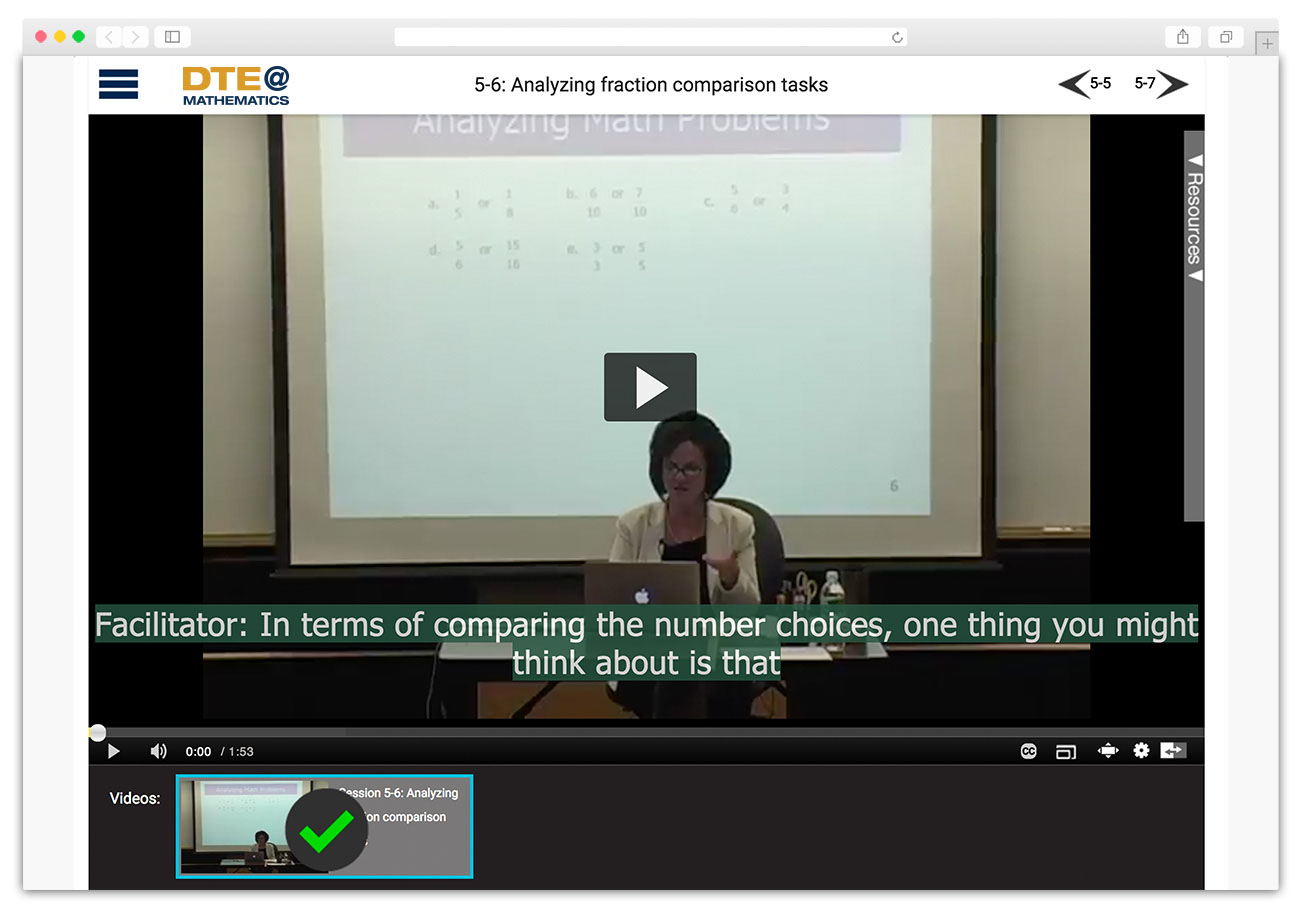Fractions - Session 5: Narrating representations and analyzing tasks
Part 6: Analyzing fraction comparison tasks
Overview
Different mathematics problems provide different opportunities for student learning. Analyzing the learning opportunities available in particular tasks allows teachers to use instructional time wisely and to maximize student opportunities to learn.
This part explores strategically choosing numbers and analyzing tasks for particular instructional purposes. In particular, it examines what mathematical ideas can be modeled and highlighted through various problems.
Key Points
Three important considerations when analyzing the learning opportunities made available by mathematics tasks:
- The mathematical ideas or terms involved in solving the task.
- The strategies that students might use to solve the task (including possible misconceptions).
- The utility and difficulty of particular representations for solving the task.
